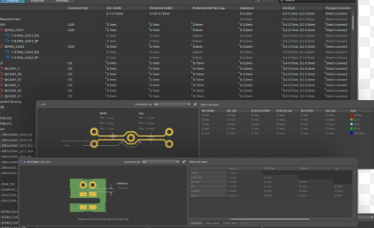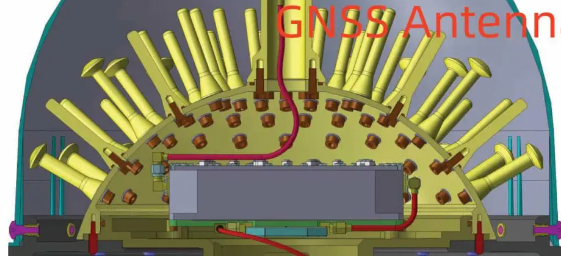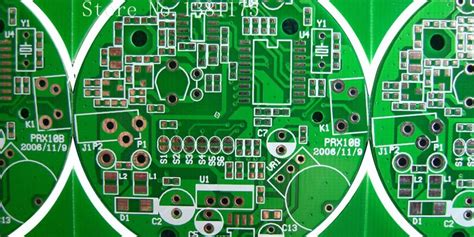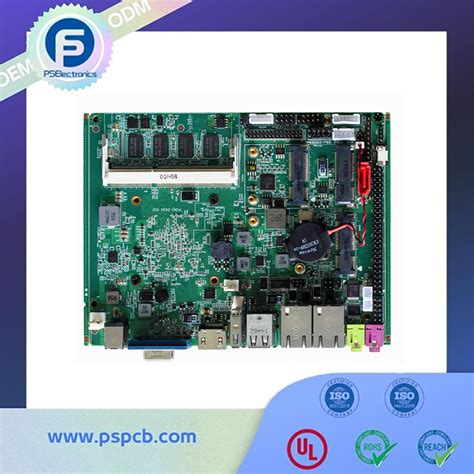Top 3D Printed Circuit Board Companies Revolutionizing Electronics
Key Takeaways
Understanding the landscape of 3D printed circuit board technology can significantly impact your decisions in the pcb manufacturing sector. As you explore the various pcb manufacturing companies, you’ll find that many are adopting 3D printing to drive innovation and efficiency. This shift allows for reduced pcb manufacturing costs, making it more accessible for businesses of all sizes. Companies utilizing 3D printing are enhancing prototyping efficiency by enabling rapid design iterations, leading to quicker testing and validation of electronic components. Moreover, the ability to integrate complex geometries and functionalities into a single printed circuit greatly reduces production timelines compared to traditional methods. By staying informed about these advancements, you can better assess how 3D printed circuits may align with your goals in the evolving landscape of pcb manufacturing business practices. Embracing this technology not only fosters competitiveness but also opens doors to new market opportunities and innovative applications.
Top Innovations in 3D Printed Circuit Board Technology
The 3D printed circuit board technology is rapidly evolving, providing innovative breakthroughs that are profoundly impacting the pcb manufacturing landscape. Companies specializing in additive manufacturing are at the forefront of these transformations, introducing sophisticated methods that enhance design flexibility and optimize production efficiency. One prime innovation involves the integration of multi-material printing, which allows for the simultaneous use of different conductive and insulating materials. This capability can significantly reduce pcb manufacturing costs, enabling designers to create more complex circuitry without compromising on performance or reliability.
Incorporating embedded components directly into the circuit boards is another revolutionary advancement. This process not only minimizes space but also improves electrical performance by reducing signal degradation caused by longer interconnections. When considering your options among various pcb manufacturing companies, it’s essential to explore how these innovations affect the overall efficiency and cost-effectiveness of your projects.
To illustrate these advancements, consider a comparison table showcasing leading innovations alongside traditional methods:
| Innovation | Traditional Method | Advantages |
|---|---|---|
| Multi-Material Printing | Single Material Layers | Increased design flexibility |
| Embedded Components | Surface-Mount Technology | Reduced assembly complexity and space savings |
| Rapid Prototyping | Standard Prototyping | Faster time-to-market |
These advancements provide a glimpse into how pcb manufacturing business practices are shifting. As technology continues to evolve, you can expect further enhancements in speed, cost, and reliability, setting new standards within the electronics industry. For more insights into leading companies making a mark in this field, consider visiting Andwin PCB.
Key Players in the 3D PCB Market
In recent years, a number of innovative companies have emerged as leaders in the 3D printed circuit board (PCB) market, fundamentally changing the landscape of electronics. These pcb manufacturing companies are not just pushing the boundaries of technology but are also redefining how prototyping and production are approached. One noteworthy example is a leader in additive manufacturing, which has developed cutting-edge techniques to reduce pcb manufacturing costs while improving functionality and design flexibility. Their focus on incorporating advanced materials ensures that products meet the diverse requirements of the market while adhering to strict performance standards. Moreover, these companies often collaborate with customers to optimize their designs for 3D printing, enhancing overall efficiency in the pcb manufacturing business. With these advancements, they are able to offer quicker turnaround times, allowing you to bring products to market faster than ever before. As you explore your options, consider how these pioneering players can facilitate your efforts in design and production, ultimately positioning your projects ahead in this competitive field. Through innovative solutions and insights into new technologies, you can leverage their expertise to achieve remarkable quality and durability in your circuit board designs.
Enhancing Prototyping Efficiency with 3D Printing
In the realm of pcb manufacturing, 3D printing has emerged as a game-changer, significantly enhancing the efficiency of prototypes. When engaging with various pcb manufacturing companies, you may find that 3D printing technology allows for rapid iteration and development of circuit boards, enabling designers to swiftly test and modify their concepts. This agility not only reduces the pcb manufacturing cost but also minimizes time-to-market for new electronic products. Traditional methods often involve lengthy production cycles and substantial upfront costs; however, with additive manufacturing techniques, you can create complex geometries and custom designs without the need for extensive tooling. Furthermore, as you adopt this innovative approach in your pcb manufacturing business, you can leverage the ability to produce small batch runs economically, which is particularly beneficial for niche markets or specialized applications. Ultimately, by embracing 3D printed solutions in your projects, you not only streamline your prototyping processes but also enhance overall product development efficiency.
Reducing Production Timelines Through Additive Manufacturing
In the realm of pcb manufacturing, the advent of additive manufacturing techniques has significantly streamlined the process, leading to markedly reduced production timelines. By leveraging 3D printing technologies, you can expedite the design and prototyping phases. This allows pcb manufacturing companies to quickly iterate on designs, making necessary adjustments that would traditionally require extensive time and resources. The capability to print complex circuit board designs in one continuous process diminishes the need for multiple components, thus cutting down on assembly time and potential errors. Furthermore, this method can lead to a substantial reduction in pcb manufacturing costs, as less material waste is produced compared to conventional methods. The flexibility of 3D printing enables you to create customized solutions tailored specifically for your needs, promoting a more agile pcb manufacturing business model that is better suited for today’s fast-paced electronics industry. As you explore these advancements, it becomes evident that adopting additive manufacturing not only enhances efficiency but also positions your initiatives at the forefront of technological innovation within the sector.
Case Studies of Successful 3D Printed Circuits
In recent years, a number of pcb manufacturing companies have successfully integrated 3D printed circuit boards into their production processes, leading to remarkable advancements in electronic prototypes. One notable example is Company A, which utilized 3D printing to streamline its pcb manufacturing business, resulting in reduced pcb manufacturing costs. By employing an additive approach, Company A was able to create complex geometries that traditional methods could not achieve, significantly enhancing the performance of their products. Similarly, Company B’s success story highlights how they leveraged 3D printed circuits to overcome design constraints and expedite their development timeline. This approach allowed them to not only improve prototyping efficiency but also respond rapidly to market demands. These case studies illustrate how innovative pcb manufacturing technologies are reshaping the expectations and capabilities within the electronics industry, proving that 3D printing is not merely a trend but a true game-changer for companies looking to stay competitive.
Future Trends in 3D Printed Electronics
As the landscape of pcb manufacturing evolves, the integration of 3D printing technology is set to redefine how pcb manufacturing companies approach design and production. You will find that innovations in additive manufacturing enable greater flexibility in creating complex circuit geometries that traditional methods struggle to achieve. These advancements are not just enhancing efficiency; they are revolutionizing the pcb manufacturing business by allowing for rapid prototyping and reducing the overall pcb manufacturing cost. Companies are increasingly leveraging 3D printing to experiment with new materials and processes that can lead to lighter, more efficient circuit boards, ultimately driving performance improvements. Furthermore, you can expect a notable shift toward sustainability within this sphere, as manufacturers explore eco-friendly materials and methods that minimize waste. The future of 3D printed electronics looks promising, hinting at a landscape where speed and customization become the norm rather than the exception. The ongoing feedback loop between design and production facilitated by 3D processes is likely to create a dynamic marketplace ripe for innovation and growth.
Challenges Faced by 3D PCB Companies
As the adoption of 3D printed circuit boards (3D PCBs) continues to gain traction, pcb manufacturing companies are confronted with several significant challenges that could impact their growth and effectiveness in the marketplace. One of the primary hurdles involves integrating traditional pcb manufacturing processes with emerging technologies. Adjusting existing workflows to accommodate additive manufacturing techniques can prove complex, leading to initial increases in pcb manufacturing costs as companies invest in new systems and training. Furthermore, the materials used for 3D printing can also affect the overall quality and durability of the end product; thus, it’s essential for firms to meticulously select materials that meet industry standards.
In addition, you may find that scalability is another critical challenge; while prototyping in small batches can be streamlined through 3D printing, producing larger volumes effectively requires further innovation. It’s vital for you to consider how your chosen pcb manufacturing business can handle demand without sacrificing quality or efficiency. As quoted by industry experts: > “In a fast-evolving market, adaptability and continuous innovation are key for sustainable growth.” By keeping these challenges in mind, you can more effectively navigate the transition into this promising frontier of electronics technology while ensuring your business remains competitive in an ever-changing landscape of pcb manufacturing.
Comparative Analysis of Leading 3D PCB Technologies
When examining the landscape of 3D printed circuit board (PCB) technology, it’s essential to consider how various companies are leveraging advancements in additive manufacturing to innovate in the field of pcb manufacturing. You’ll find that many pcb manufacturing companies are adopting unique approaches that not only streamline their processes but also target specific challenges within the industry. For instance, some focus on minimizing pcb manufacturing costs, utilizing advanced materials and processes that significantly cut down inefficiencies in traditional methods. In this competitive environment, successful pcb manufacturing businesses embrace technology such as automated design-to-production workflows and specialized software tools to improve prototyping times and product accuracy. By integrating various technologies like electronic components printing and multi-material deposition, these leaders stand out in the market for their ability to rapidly prototype complex circuit designs while reducing lead times considerably. This comparative analysis helps you understand how each player is carving its niche and contributing to the evolving narrative of 3D printed electronics.
Conclusion
In summary, the advancements in 3D printed circuit boards have paved the way for a significant transformation in the pcb manufacturing landscape. As you explore this dynamic field, you will find that various pcb manufacturing companies are at the forefront, leveraging innovative technologies to enhance their offerings. Understanding how these companies operate not only helps you gauge the pcb manufacturing cost, but also sheds light on their unique approaches to reduce timeframes significantly. By engaging with these leaders in the industry, you can appreciate how their pioneering efforts are reshaping not only prototyping efficiency but also setting new standards for quality and sustainability in the pcb manufacturing business. The continuous evolution of 3D printed technologies signals a promising future for electronics, as these innovations strive to meet growing demands while remaining cost-effective and efficient.
FAQs
What are the main benefits of 3D printed circuit board technology?
3D printed circuit board (PCB) technology offers multiple advantages such as enhanced design flexibility, reduced production costs, and significantly faster prototyping. With pcb manufacturing methods evolving, companies can create intricate designs that would be difficult or impossible to achieve with traditional methods.
How does 3D printing impact the overall PCB manufacturing cost?
By reducing the need for multiple processes and materials, pcb manufacturing cost can be decreased significantly. 3D printing allows for a more streamlined production process, minimizing waste and lowering expenses associated with traditional PCB fabrication techniques.
Who are the leading players in the PCB manufacturing business?
Some of the top pcb manufacturing companies include industry leaders that specialize in advanced technologies such as 3D printing. These companies are revolutionizing the market by implementing innovative practices that enhance production efficiency and product quality.
Can you explain how 3D printing improves prototyping efficiency in PCB development?
With rapid prototyping capabilities, 3D printing allows for quicker iterations in design testing. This responsiveness to changes significantly shortens the lead time needed to develop new circuits compared to conventional methods.
What challenges do PCB manufacturing companies face when adopting new technologies?
While innovation brings numerous benefits, challenges such as high initial setup costs, learning curves, and integrating new systems into existing workflows can hinder some pcb manufacturing businesses from fully embracing these advanced solutions.





